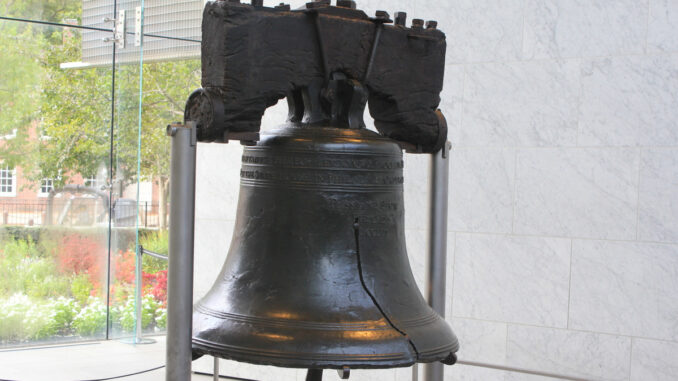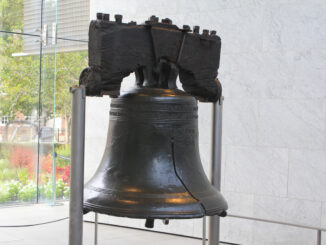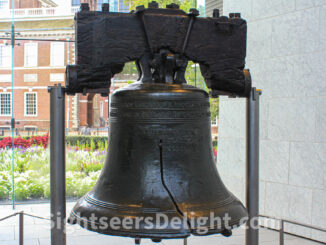
PHILADELPHIA — Of all the nation’s symbols, none may be as enduring as the Liberty Bell.
But the bell, a Philadelphia institution for two-and-a-half centuries, is as much — if not more — fiction and folklore as it is a fact.
As one account goes, an aging bell ringer on July 4, 1776, was awaiting word that the colonies declared independence from Great Britain. As the day dragged on, the bell ringer grew discouraged until a boy — his grandson, by some accounts — appeared with the good news.
At once, the bell rang.
While it’s a great story, it’s just a story that emerged circa 1847. It wasn’t until days later that the Declaration of Independence was even officially announced, so most historians agree no bells rang on July 4, 1776, to celebrate our independence. In all likelihood, it did ring on the day it was officially announced (perhaps July 6 or July 8).
The bell was originally cast in 1752 by the Whitechapel Bell Foundry, a British foundry that is still in operation today. It arrived in Philadelphia in August 1752 and cracked on its first use.
A pair of founders, John Pass and John Stow, offered to recast the bell. Even though neither was an expert in bell casting, the two broke it up, melted it down and recast it after adding copper to the mix to strengthen the metal.
What emerged was the Liberty Bell. However, history shows the improved metal conglomeration wasn’t strong enough to avoid cracking.
But, after this point, history and lore merge. To help, here are some interesting facts about the country’s most famous bell.
— The bell’s inscription, “Proclaim LIBERTY throughout all the land unto all the inhabitants thereof,” is based on Leviticus 25:10.
— The Liberty Bell was probably first called the Liberty Bell in the latter half of the 1830s when it was used as a symbol of abolitionists, mainly because the inscription indicated liberty should be proclaimed to “all the inhabitants,” not just some.
— The bell was originally used to summon legislators and the public to meetings.
— Fearing the bell would be captured and melted down and turned into cannonballs, it was moved to Allentown following George Washington’s Sept. 11, 1777, defeat at the Battle of Brandywine.
— For years, the Liberty Bell toured the country. “Not for $5,000 would I have missed the scene of this wonderful day,” Philadelphia Mayor Charles F. Warwick said in October 1895 when the bell visited Knoxville, Tenn., according to a contemporary New York Times article.
— The precise date of the bell’s crack is unknown, but many historians believe it occurred between 1841 and 1846. Some accounts say it happened as the bell rang following the 1835 death of Chief Justice of the United States John Marshall.
— What appears to be the large crack was an attempt to fix the bell. The final and fatal break, which dates to 1846, can be seen upon close inspection.
— The bell last sounded in 1846.
— While the bell traveled the country for decades, it hasn’t left Philadelphia since 1915. On its many trips over the years, it suffered additional damage at the hands of souvenir hunters who chipped off pieces as keepsakes.
The Liberty Bell moved into its current location in 2003. For more information, visit www.nps.gov/inde/liberty-bell-center.htm.





